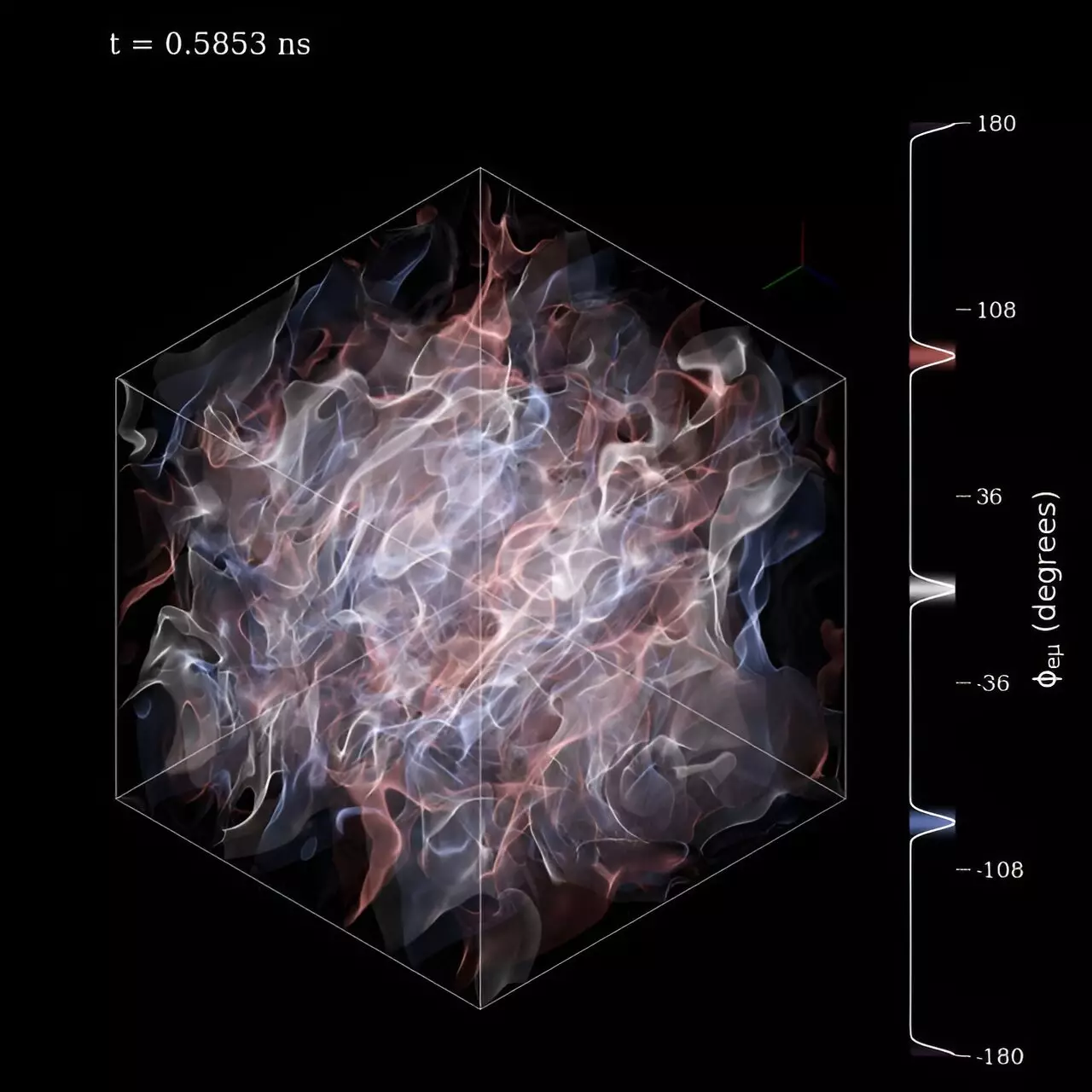Neutrinos, often dubbed “ghost particles” due to their remarkable ability to pass through matter without interaction, possess a fascinating quantum mechanical property known as “flavor.” This property gives neutrinos the ability to oscillate between one type of flavor to another as they travel through space, a phenomenon that challenges astrophysicists in their studies of cosmic events. Particularly in complex environments like core-collapse supernovae and neutron star mergers, tracking not just the physical movement of neutrinos but also their flavor changes becomes a daunting task. The enormous number of neutrinos, coupled with their unpredictable behavior, creates a complex web that leaves scientists grappling for effective methods of analysis.
A Pioneering Approach to Mathematical Complexity
Recent research has proposed a groundbreaking methodology that seeks to transcend traditional calculations of neutrino motion by incorporating the intricacies of quantum mechanical flavor variations. This innovative approach significantly simplifies the daunting calculations typically associated with understanding neutrino behavior in extraordinary cosmic systems. By expanding existing frameworks, scientists can now analyze the relationship between neutrinos’ physical traversal and their accompanying flavor transformations in a more manageable way.
Published in notable journals like The Astrophysical Journal and Physics Letters B, this research offers fresh insights into how we might understand the processes occurring during dramatic cosmic explosions. These events don’t just emit bright bursts of light; they also unleash multiple types of cosmic messengers, from photons to gravitational waves, and most crucially, neutrinos. By extracting meaning from these various signals, scientists can glean vital information about the underlying physics, which could potentially reshape our understanding of the universe.
Neutrinos: The Key to Cosmic Evolution
The importance of neutrinos extends beyond just being messengers of energy. They play an invaluable role in astrophysical events, carrying away a significant portion of energy generated during supernovae and neutron star mergers. Gaining a deeper comprehension of neutrino interactions is key to predicting the formation of heavy elements during these explosive stellar episodes. Here, the angular moment method comes into play by consolidating the myriad neutrino emissions into a compact set of equations. This method captures essential dynamics that help in predicting flavor transformations, thereby simplifying the problem at hand.
In an intriguing turn of events, researchers have specifically applied this semi-classical angular-moment-based approach to study rapid neutrino flavor transformations, referred to as “fast-flavor” transformations. This type of oscillation is contingent upon angular information, making the findings from this study particularly significant. Preliminary results indicate that this new mathematical framework successfully models the growth of these flavor transformations, revealing a promising pathway for future exploration.
Charting New Territories in Astrophysics
As we harness the potential of the angular moment method to tackle complex neutrino interactions, the field moves one step closer to elucidating the intricate processes taking place in neutron star mergers and supernovae. The findings underscore the profound interconnectedness between mathematical modeling and empirical astrophysical observations, paving the way for advancements in our cosmic narrative. By addressing the challenges posed by neutrino flavor transformations, scientists are not just expanding our comprehension of fundamental particles; they are constructing the building blocks necessary for understanding the universe’s most explosive phenomena. This research stands as a testament to the relentless pursuit of knowledge in the face of its inherent complexity, urging the scientific community to dig deeper into the cosmic unknown.


Leave a Reply